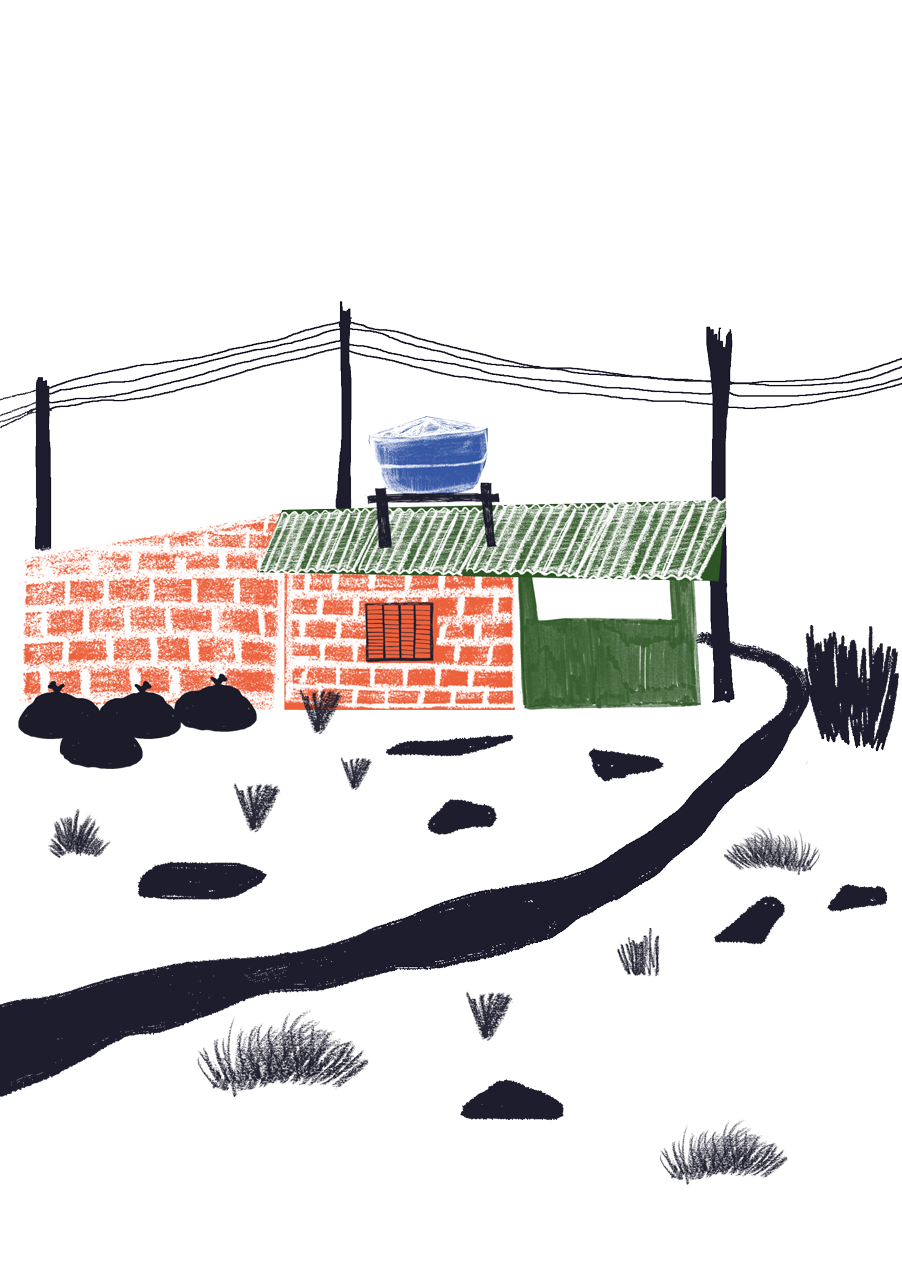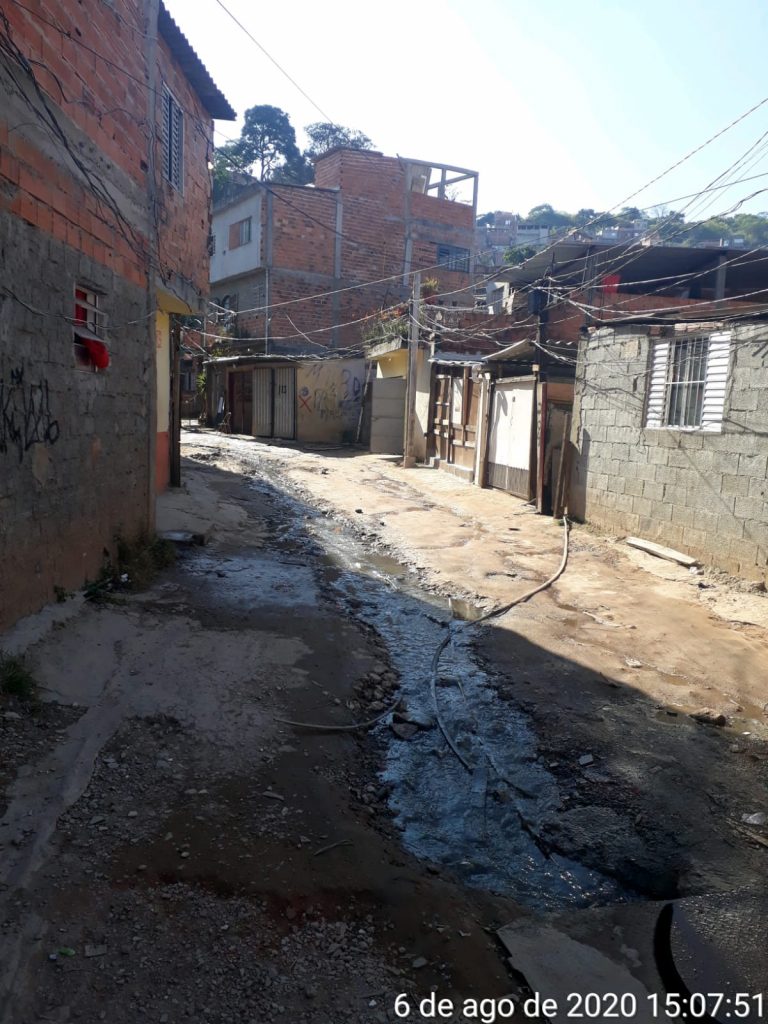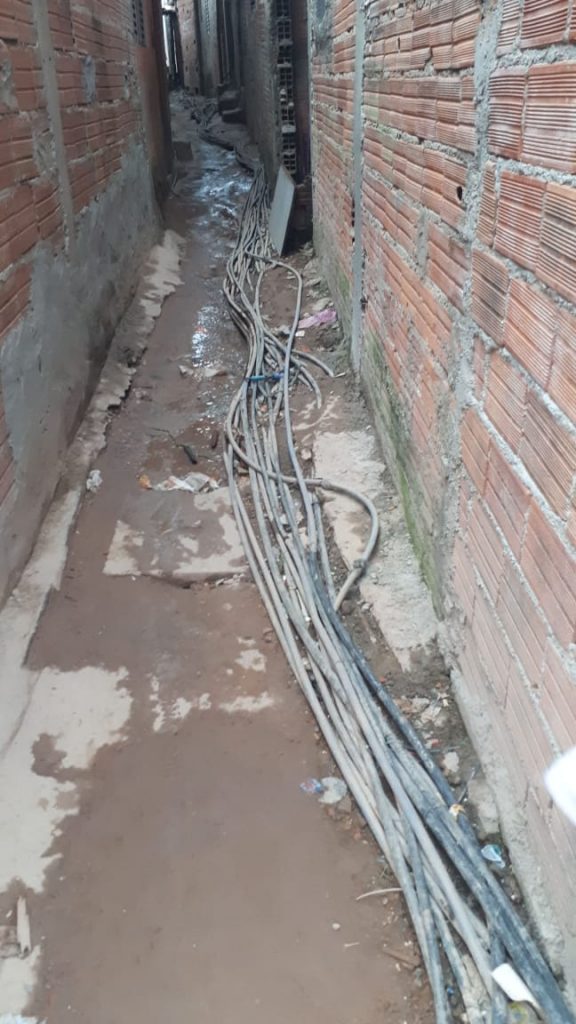
Fazendinha, Brasilândia district, Freguesia do Ó/Brasilândia Sub prefecture
Leadership Cláudia, 41 years old, black and unemployed. She has lived in Fazendinha for 15 years and since she arrived she has been a leader. Her involvement with the movement started when she bought land in the community, found it irregular and when looking for information on how she could solve the situation, she was introduced to the housing movement. The biggest problem in the community, in addition to the lack of formal infrastructure, is caused by the difficulty of managing the informal network. When new residents hook up their hoses, the system literally bursts and interrupts the supply of at least 30 families. D. Claudia believes that the solution to this problem is the installation of the formal supply network and individual water consumption control watches.
“In rainy weather, the lack of infrastructure ends up and mixing sewage with river water, and that terrible thing is left for us to deal with. And paving, because we have no asphalt, no address, no recognition. ”
Regarding the water supply not being regular, he says: “No. Because you did not enter, you cannot enter Sabesp. They don’t give an explanation. ”
Resident Regina, born in São Paulo – SP, is 35 years old, brown, divorced, lives with 3 more people and works as a cleaning assistant. She bought the house in Fazendinha 10 years ago to get out of the rent. It has a bathroom inside the house, with toilet, shower and sink with running water, but no water tank. All the plumbing in the house is connected directly to the hoses.
Resident Lúcia, 32 years old, black, born in São Paulo – SP, lives with 7 people and works “from home”. She arrived at Fazendinha 15 years ago by contact from the mother who bought land in the community. Before she paid rent and wanted to own her own home. It has no water tank and stores water in bottles. There is a bathroom inside the house with running water in the shower and toilet, but there is no sink. She uses the shower and only uses a bucket when water is missing and picks it up with the neighbor who has a water tank.
She reports that she runs out of water “Because the hose breaks, the others cut the hose, the others take the hose away, when Sabesp cleans the river that cuts the hoses. This is our life at Fazendinha. ”
“Because if a person without water, you cannot make food, without food you have low immunity; you can’t get clean, if you can’t get clean anywhere you can get contaminated; if you get contaminated and don’t clean yourself, you have no means to clean yourself after that, so you can contaminate yourself with the virus and then pass it on to someone else, it gets much, much, easier, you know? ”
Resident Alberto, 20 years old, black, single, from São Paulo-SP and works with sales. He lives with 6 people and has been in the community for 5 years. He had to leave the previous house where he paid rent quickly and Fazendinha was the most immediate solution he could manage. His house has a bathroom with toilet and shower with running water, but it does not have a sink, it uses the tank that is outside. It does not have a water tank and stores water in bottles, so children do not miss out, making food and washing dishes. The electric shower heats up a lot, the energy is also high and the network does not support it, so he takes a bath in a bucket and mug.
The Fazendinha community is located in the Jardim Vista Alegre neighborhood, in the far north of the capital of São Paulo and borders the Cantareira State Park. Their houses are located along the Bananal Stream. This community has existed for 16 years, where today approximately 1200 families live, totaling 5,000 people. The houses vary between masonry and bricks without plastering, some are wooden shacks and others are canvas shacks. There are no residents’ associations and all assistance that residents receive is from the housing movement.
Water became a community claim in 2005, since the source of supply was a spout, with very dirty and untreated water. With organization and union of residents, they managed to supply the current point, but it is still informal. The reason for the non-regularization of this water point by the water supply company is unknown to residents. There is no basic sanitation, the sewage is in the open and led directly to the stream. Occupation is the only part of the neighborhood without regularized water.
The lack of formal and regular water supply led to the construction of an informal, fragile distribution network, formed by hoses. When new calls are made without control, the system collapses and interrupts the arrival of water for families supplied by the informal network. Such situations lead to conflicts between residents.
The informal water supply is also interrupted when the hoses are removed by the supply service provider when cleaning the river. When this happens, the water supply in the entire community is affected and makes household chores and childcare difficult. As most houses do not have a water tank, in times of lack of water, families help each other by lending water. Solidarity between neighbors is very present.
The houses have a bathroom with toilet, shower and sink, but the water comes from a single informal source, which does not meet the needs of all families. For this reason, the residents of Fazendinha claim the basic sanitation infrastructure, paving, fixed address and regularized direct water supply with a clock in each house.




Photos by: Marilene Ribeiro de Souza e Sheila Cristiane Santos Nobre






